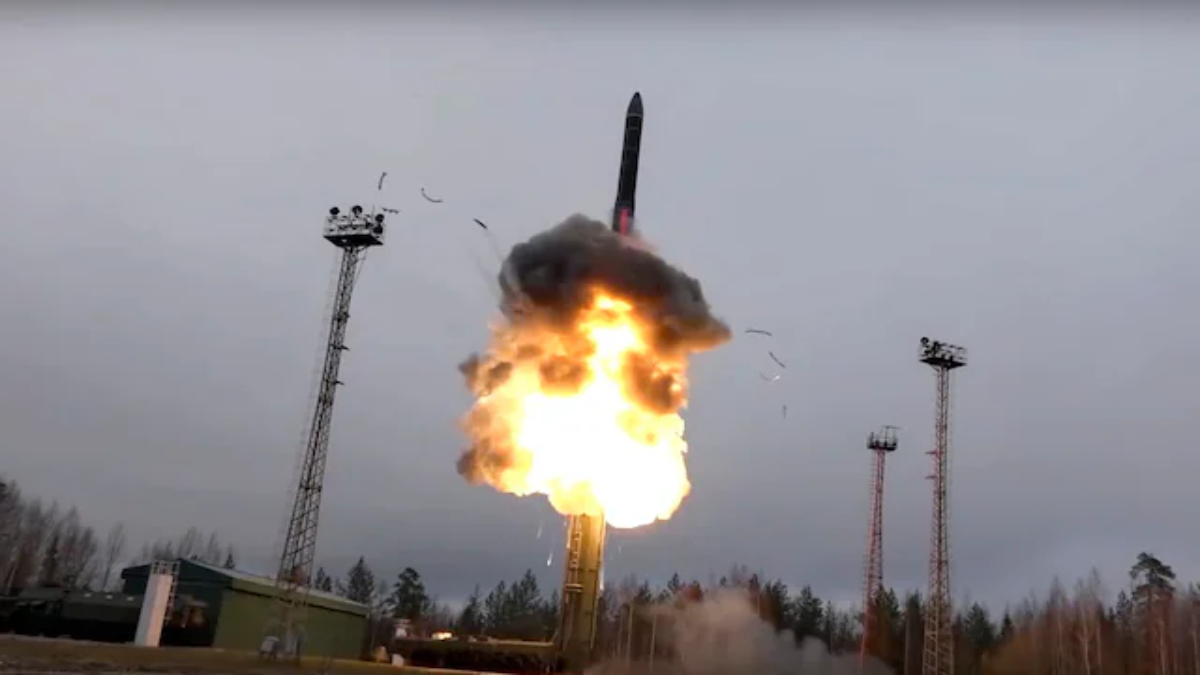Now Reading: India Nuclear Tightrope: US-Russia Standoff
-
01
India Nuclear Tightrope: US-Russia Standoff
India Nuclear Tightrope: US-Russia Standoff

The escalating rhetoric and military maneuvers surrounding the nuclear arsenals of the United States and Russia have once again cast a shadow of Cold War-era brinkmanship over global security.1 As the world watches these two nuclear heavyweights engage in what has been described as a “ballistic” standoff—marked by mutual accusations and the public showcasing of advanced weaponry—the question of where other nuclear powers stand becomes critically important.
For India, a major, but non-signatory to the Nuclear Non-Proliferation Treaty (NPT), its position is a delicate and principled balancing act, rooted in its unique security requirements, its foreign policy doctrine of multi-alignment, and its historical commitment to global disarmament.2
The Doctrine of Credible Minimum Deterrence
India’s nuclear posture is fundamentally different from the two global superpowers. It is guided by the doctrine of ‘Credible Minimum Deterrence’ and a formal, though occasionally questioned, ‘No First Use’ (NFU) policy.3
- Credible Minimum Deterrence: This doctrine dictates that India’s nuclear arsenal is solely for deterrence.4 The size and capability of its arsenal are designed to inflict punitive retaliation that would be unacceptable to an aggressor, but not to engage in a full-scale arms race.5 This self-imposed restraint contrasts sharply with the “mad dash” for advanced capabilities seen in the US-Russia rivalry.
- No First Use (NFU): India has pledged not to be the first to initiate a nuclear strike, though it reserves the right to massive retaliation if deterrence fails.6 This commitment to NFU is a cornerstone of its responsible nuclear power status, aiming to reduce the chance of nuclear escalation. However, recent statements from some political figures have occasionally led to speculation about a potential review of this policy, particularly in response to perceived threats from chemical or biological weapons.7
A Call for Non-Discriminatory Global Disarmament
Historically, India has been a vocal proponent of universal, non-discriminatory, and verifiable nuclear disarmament.8 This commitment, however, is a key reason why it has refused to sign the NPT or the Comprehensive Nuclear-Test-Ban Treaty (CTBT), which it views as fundamentally flawed because they formalize a distinction between “nuclear haves” (the P5) and “nuclear have-nots.”9
India’s position on the current standoff is therefore consistent:
- Condemnation of Nuclear Threat: India has consistently stressed that the use or threat of use of nuclear weapons is inadmissible.10 This principle was notably reiterated in its diplomatic efforts during its presidency of the G20, urging major powers to de-escalate.
- Focus on Multilateralism: New Delhi believes the long-term solution lies not in bilateral arms control (like the now-strained US-Russia treaties) but in a comprehensive Nuclear Weapons Convention within a multilateral, global framework.11
- Rejection of the Arms Race: India views the resurgence of a nuclear arms race between the US and Russia/China with concern, as it directly undermines global non-proliferation norms and increases the risk of miscalculation.
The Balancing Act: Multi-Alignment in Action
In geopolitical terms, India’s foreign policy of “multi-alignment” allows it to maintain strong strategic and defense ties with both the United States and Russia, even as they face off.12
| Relationship Pillar | United States (US) | Russia |
| Strategic Partnership | A foundational strategic partner with rapidly expanding defense, trade, and technology cooperation. | A ‘Special and Privileged Strategic Partnership’ and historically India’s largest and most dependable defense supplier. |
| Nuclear Cooperation | Key partner in civil nuclear energy, culminating in the historic 2008 civil nuclear deal. | Ongoing and critical partner in India’s civil nuclear power program (e.g., Kudankulam), and a major source of military nuclear technology. |
| Standoff Posture | Urges de-escalation; uses diplomatic clout to bridge differences, particularly in multilateral forums. |
This unique positioning means that while New Delhi is gravely concerned by the nuclear brinkmanship, it avoids choosing sides in the direct confrontation. Instead, it positions itself as a responsible emerging global power—one that is both capable of defending itself with nuclear weapons and deeply committed to preventing their use worldwide.13
Conclusion
India stands firmly outside the escalating nuclear rivalry, guided by a self-imposed restraint and a principled demand for global nuclear equality. For New Delhi, the US-Russia ‘ballistic’ rhetoric serves as a potent reminder of the inherent instability of a world fractured by nuclear competition. Its primary diplomatic goal remains to lower the global nuclear temperature and push for a verifiable, non-discriminatory framework that secures the entire planet from the ultimate weapons of mass destruction.









